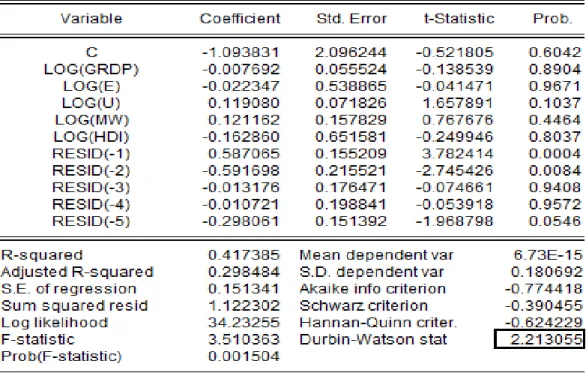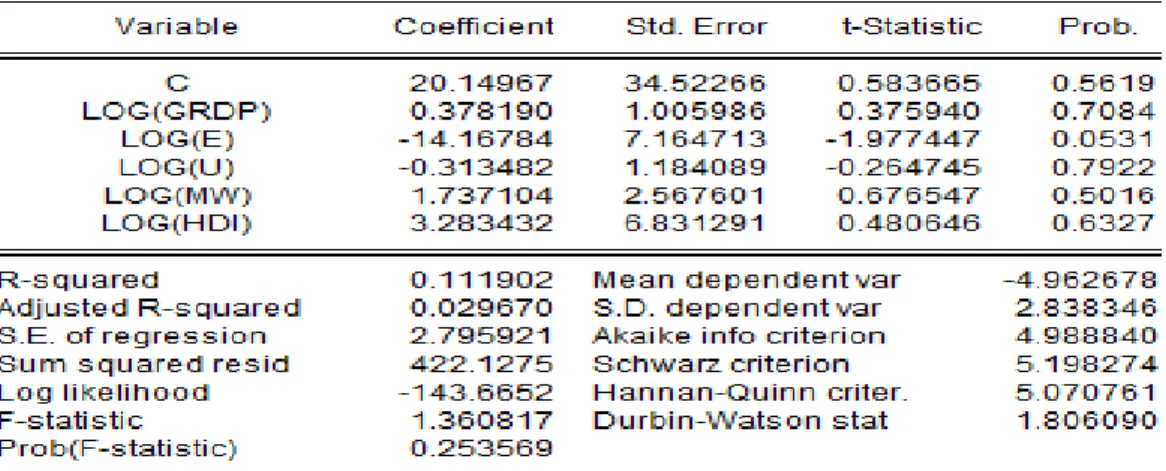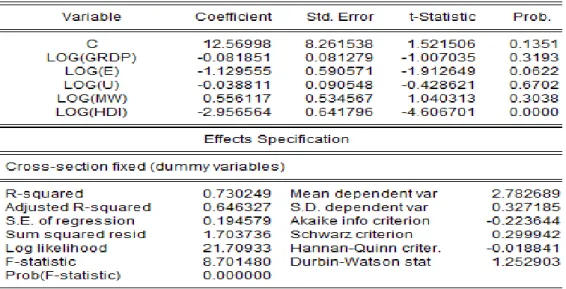ANALYSIS OF THE EFFECT OF GROSS REGIONAL DOMESTIC PRODUCT, EDUCATION, UNEMPLOYMENT, MINIMUM WAGES AND HUMAN DEVELOPMENT INDEX ON POVERTY OF WEST NUSA TENGGARA PROVINCE. Increasing the human development index in a city or district in NTB province by as much as 1% will reduce poverty by as much as 2.95%. The variation of the poverty variable can be explained by five independent variables as much as 73.02% or in other words the contribution of gross regional domestic product, education, open unemployment, minimum wage and human development index that affects poverty in NTB province as much as 73.02%, while the remaining 26.98% is the contribution of other variables that are not addressed in this research.
Poverty of West Nusa Tenggara province (NTB) reached the population in September 2018, poverty in NTB province decreased by 16.07% in 2017 compared to last year, but poverty in every region in NTB province is considered very high. Therefore, one of the most important indicators of development success is the decreasing rate of poverty. Based on the background of the above problems, West Nusa Tenggara (NTB) province had a phenomenon of fluctuating open unemployment, rising human development index, rising minimum wages in 2012-2017, but the poverty rate is still high.
What is the effect of the gross regional domestic product (GRDP) on poverty in the NTB province in 2012-2017. Furthermore, poverty can be seen from the level of access to power that has an understanding of the political system that can determine the ability of a group of people to access and use resources. According to Big Indonesian Dictionary (1991), education defines a learning process for individuals to gain knowledge and understanding of the higher specific objects.
The low level of education will result in a lack of knowledge, abilities and skills, resulting in low work productivity of the person.
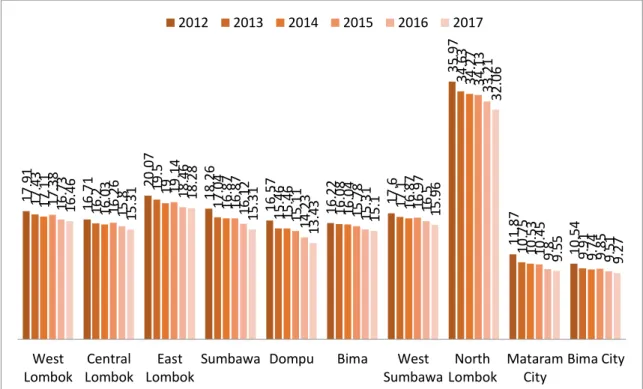
RESEARCH METHODOLOGY
FINDING AND DISCUSSION
Impact of Gross Regional Domestic Product (GDP) on poverty rate in West Nusa Tenggara province. The value of the regression coefficient shows that GDP has a negative impact on the poverty rate in West Nusa Tenggara province. This means that if there is a 1% increase in GDP, it will cause a decrease in the poverty rate value of 0.0818.
Education coefficient value -1.1295 shows that education has a negative influence on the poverty rate in NTB province. This means that if there is an increase in education by 1%, it will cause a decrease in the poverty rate value by 1.1295%. Unemployment coefficient value -0.0388 shows that unemployment has a negative impact on poverty rate in West Nusa Tenggara province.
This means that if there is an increase in unemployment by 1%, it will lead to a decrease in the poverty rate value by 0.0388%. Influence of Minimum Wages on Poverty Rate in West Nusa Tenggara. The regression result above shows that minimum wages have a coefficient of 0.5561 with the probability value of the minimum wage variable 0.3038, this value is greater than the value of α (0.05), and then the individual. Minimum wage coefficient value 0.5561 shows that minimum wage has positive influence on poverty rate in West Nusa Tenggara.
This means that if there is an increase in the minimum wage by 1%, it will lead to an increase in the poverty rate value by 0.5561%. HDI coefficient value -2.9565 shows that HDI has negative influence on poverty rate in West Nusa Tenggara. This means that if there is an increase in HDI by 1%, it will lead to a decrease in the poverty rate value by 2.9565%.
GRDP, Education, Open Unemployment, Minimum Wages and Human Development Index variables simultaneously affect the Poverty Rate variable. The insignificance of GRDP in influencing poverty can also be seen based on the data that the increase in the rate of GRDP in West Nusa Tenggara (NTB) province from 2012 to 2017 is accompanied by a slow decrease in poverty rate in West Nusa Tenggara province. Education variable shows a negative sign and does not have a significant effect on the poverty rate in West Nusa Tenggara (NTB) province.
In this research, Open Unemployment variable has negative and insignificant impact on poverty rate because it can be seen at the significance value -0.0388 with probability of 0.6702 > 0.05. Human Development Index (HDI) variable shows negative signs and affects the poverty rate significantly in West Nusa Tenggara province.
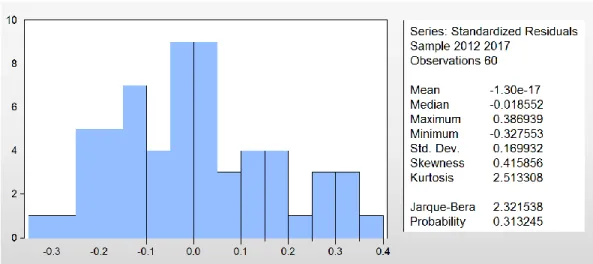
CONCLUSION AND RECOMMENDATION Conclusion
Moreover, investment in education and health care will have more meaning for the poor than for the non-poor (Lanjouw, et al, 2001), because for the poor the most important asset is their raw labour. The existence of low-cost education and health services will greatly help to increase productivity, and in turn increase revenue. The increase in minimum wages leads to higher labor costs and companies respond by raising commodity prices. An increase in commodity prices reflects the increase in consumer spending that would be required to purchase the same types of goods and services as before the minimum wage.
It is found that the impact of HDI on poverty reduction is significant and the impact of HDI on poverty is found to be negative. Therefore, we could accept a test of the hypothesis that there was a simultaneous effect of the independent variable on the poverty level variable. Implement employment policies by promoting job creation and improving the access of the poor to jobs.
Increasing economic growth and income are important, but not the only, paths to poverty reduction. Connecting the rural poor to urban markets and helping the poor get better jobs is a good way to empower the poor in promoting their potential. In addition, a concentrated effort is required to improve life in society, increase job vacancies in both rural and urban areas, so that the poor can get better jobs.
Increasing the quantity and quality of basic infrastructure such as public roads and sanitation will also increase the quality of life for the poor. Because most of the poor in NTB province work in agriculture and trade, which are not included in the informal sector. Concern about minimum wages for informal workers is very crucial to increase purchasing power, which in turn increases prosperity.
Since, in the NTB province, the majority of the poor live in rural areas and are employed in the agricultural sector. A Panel Data Analysis of the Index of the Role of Human Development in Poverty Reduction in Papua 2010-2015.

